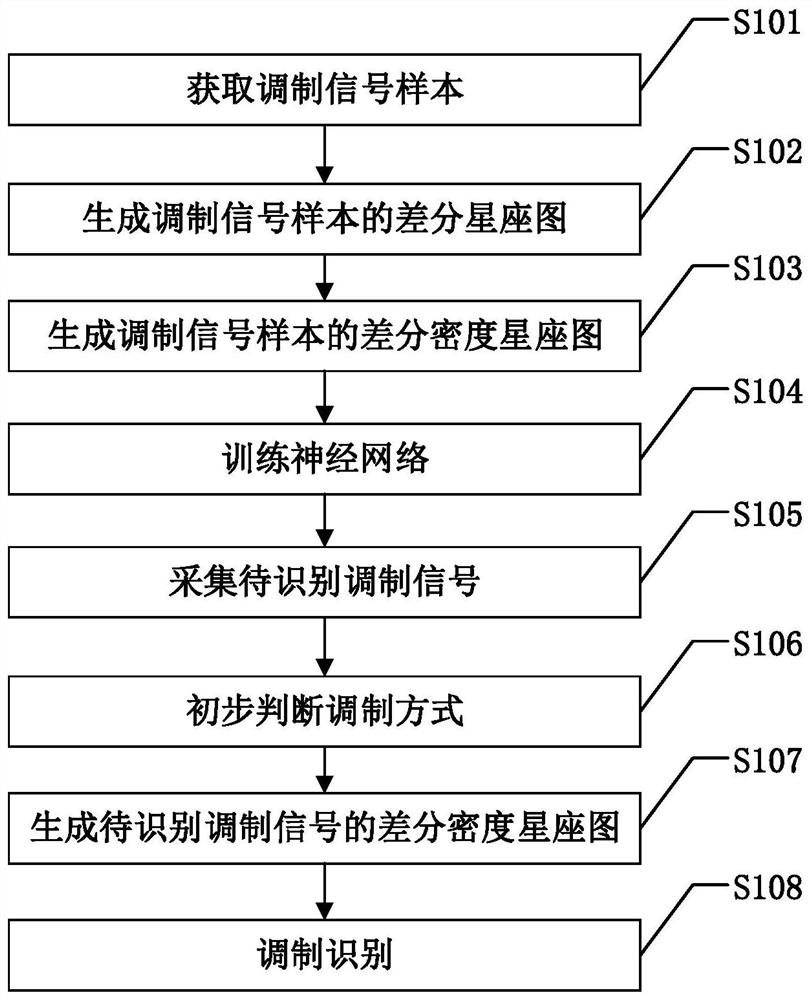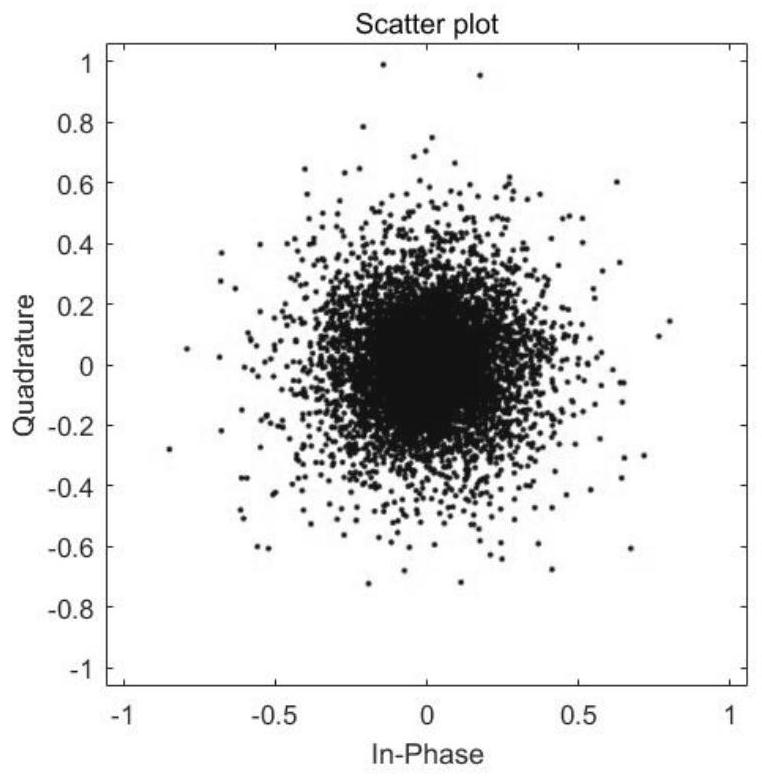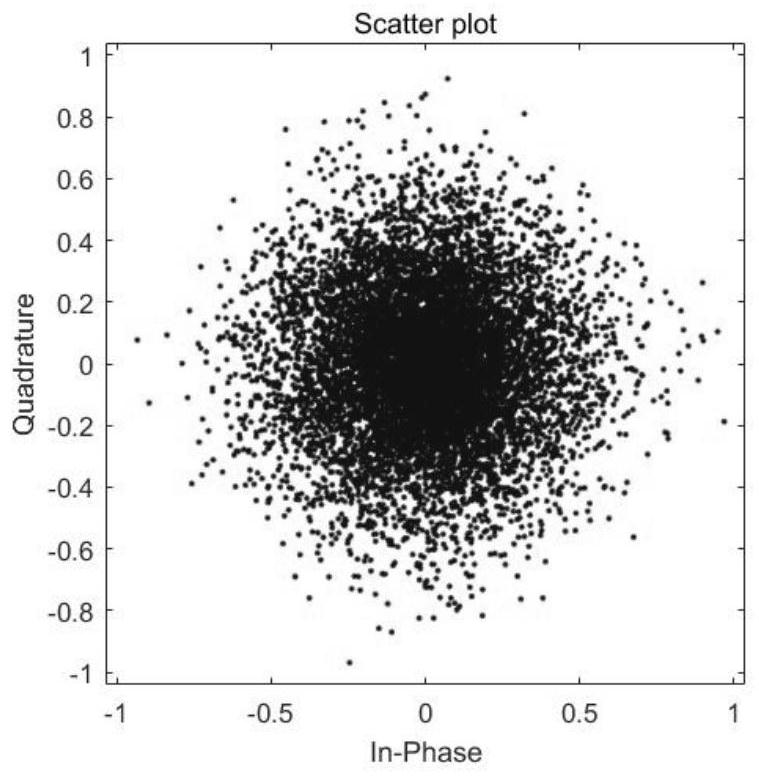Modulation Identification Method Based on Differential Density Constellation
A modulation identification and constellation diagram technology, applied in the field of modulation identification, can solve the problems of poor noise resistance, waste of network performance, large amount of parameters, etc., and achieve the effect of improving modulation identification rate, anti-frequency offset effect, and good anti-noise performance.
- Summary
- Abstract
- Description
- Claims
- Application Information
AI Technical Summary
Problems solved by technology
Method used
Image
Examples
Embodiment
[0030] figure 1 It is a flow chart of a specific embodiment of the modulation identification method based on the differential density constellation diagram of the present invention. Such as figure 1 As shown, the specific steps of the modulation identification method based on the differential density constellation diagram of the present invention include:
[0031] S101: Obtain a modulated signal sample:
[0032] According to actual needs, determine the M modulation modes to be identified from PSK modulation and QAM modulation, collect several modulation signal samples with preset durations for each modulation mode, and record the dth modulation signal sample as x d(t), t represents time, d=1, 2, ..., D, D represents the number of samples of the modulated signal.
[0033] In this embodiment, 6 modulation modes are set, which are respectively BPSK (Binary Phase Shift Keying, binary phase shift keying), QPSK (Quadrature Phase Shift Keying, quadrature phase shift keying), 8PSK ...
PUM
 Login to View More
Login to View More Abstract
Description
Claims
Application Information
 Login to View More
Login to View More - R&D
- Intellectual Property
- Life Sciences
- Materials
- Tech Scout
- Unparalleled Data Quality
- Higher Quality Content
- 60% Fewer Hallucinations
Browse by: Latest US Patents, China's latest patents, Technical Efficacy Thesaurus, Application Domain, Technology Topic, Popular Technical Reports.
© 2025 PatSnap. All rights reserved.Legal|Privacy policy|Modern Slavery Act Transparency Statement|Sitemap|About US| Contact US: help@patsnap.com



